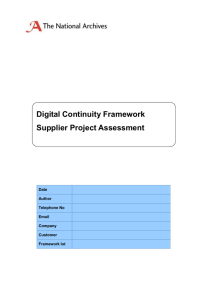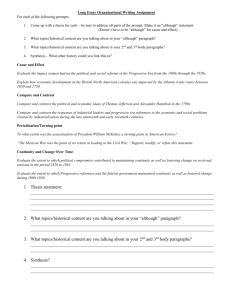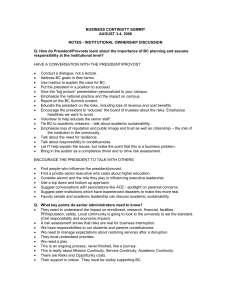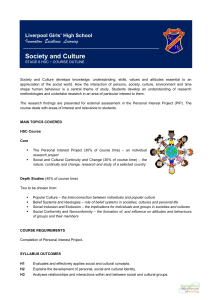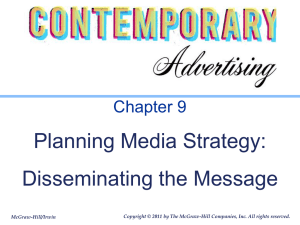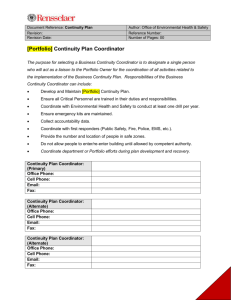CHANGE OVER TIME THEME COMPARISON BY REGION THEME:
advertisement
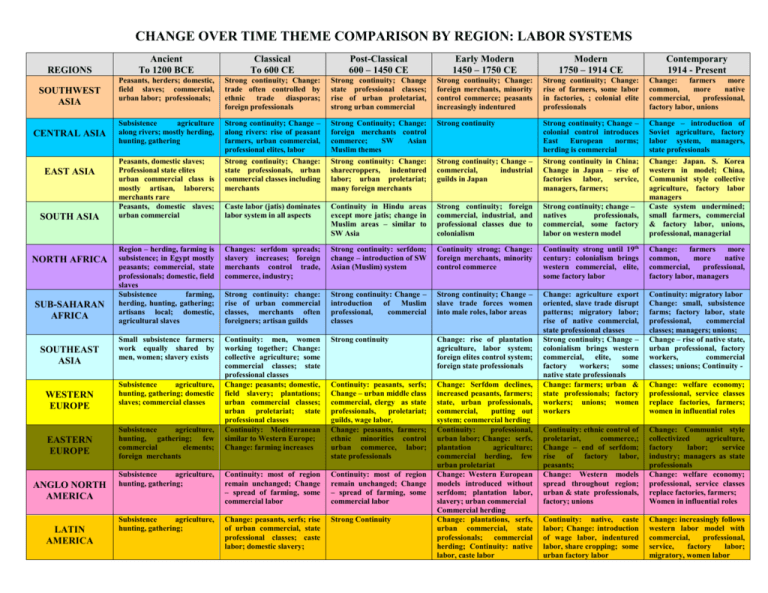
CHANGE OVER TIME THEME COMPARISON BY REGION: LABOR SYSTEMS REGIONS SOUTHWEST ASIA CENTRAL ASIA EAST ASIA SOUTH ASIA NORTH AFRICA SUB-SAHARAN AFRICA SOUTHEAST ASIA WESTERN EUROPE EASTERN EUROPE ANGLO NORTH AMERICA LATIN AMERICA Ancient To 1200 BCE Classical To 600 CE Post-Classical 600 – 1450 CE Early Modern 1450 – 1750 CE Modern 1750 – 1914 CE Contemporary 1914 - Present Peasants, herders; domestic, field slaves; commercial, urban labor; professionals; Strong continuity; Change: trade often controlled by ethnic trade diasporas; foreign professionals Strong continuity; Change state professional classes; rise of urban proletariat, strong urban commercial Strong continuity; Change: foreign merchants, minority control commerce; peasants increasingly indentured Strong continuity; Change: rise of farmers, some labor in factories, ; colonial elite professionals Change: farmers more common, more native commercial, professional, factory labor, unions Subsistence agriculture along rivers; mostly herding, hunting, gathering Strong continuity; Change – along rivers: rise of peasant farmers, urban commercial, professional elites, labor Strong continuity; Change: state professionals, urban commercial classes including merchants Strong Continuity; Change: foreign merchants control commerce; SW Asian Muslim themes Strong continuity: Change: sharecroppers, indentured labor; urban proletariat; many foreign merchants Strong continuity Strong continuity; Change – colonial control introduces East European norms; herding is commercial Strong continuity in China; Change in Japan – rise of factories labor, service, managers, farmers; Caste labor (jatis) dominates labor system in all aspects Continuity in Hindu areas except more jatis; change in Muslim areas – similar to SW Asia Strong continuity; foreign commercial, industrial, and professional classes due to colonialism Strong continuity; change – natives professionals, commercial, some factory labor on western model Change – introduction of Soviet agriculture, factory labor system, managers, state professionals Change: Japan. S. Korea western in model; China, Communist style collective agriculture, factory labor managers Caste system undermined; small farmers, commercial & factory labor, unions, professional, managerial Region – herding, farming is subsistence; in Egypt mostly peasants; commercial, state professionals; domestic, field slaves Subsistence farming, herding, hunting, gathering; artisans local; domestic, agricultural slaves Changes: serfdom spreads; slavery increases; foreign merchants control trade, commerce, industry; Strong continuity: serfdom; change – introduction of SW Asian (Muslim) system Continuity strong; Change: foreign merchants, minority control commerce Continuity strong until 19th century: colonialism brings western commercial, elite, some factory labor Change: farmers more common, more native commercial, professional, factory labor, managers Strong continuity: change: rise of urban commercial classes, merchants often foreigners; artisan guilds Strong continuity: Change – introduction of Muslim professional, commercial classes Strong continuity; Change – slave trade forces women into male roles, labor areas Small subsistence farmers; work equally shared by men, women; slavery exists Continuity: men, women working together; Change: collective agriculture; some commercial classes; state professional classes Change: peasants; domestic, field slavery; plantations; urban commercial classes; urban proletariat; state professional classes Continuity: Mediterranean similar to Western Europe; Change: farming increases Strong continuity Change: rise of plantation agriculture, labor system; foreign elites control system; foreign state professionals Continuity: migratory labor Change: small, subsistence farms; factory labor, state professional, commercial classes; managers; unions; Change – rise of native state, urban professional, factory workers, commercial classes; unions; Continuity - Continuity: peasants, serfs; Change – urban middle class commercial, clergy as state professionals, proletariat; guilds, wage labor, Change: peasants, farmers; ethnic minorities control urban commerce, labor; state professionals Subsistence agriculture, hunting, gathering; Continuity: most of region remain unchanged; Change – spread of farming, some commercial labor Continuity: most of region remain unchanged; Change – spread of farming, some commercial labor Continuity: ethnic control of proletariat, commerce,; Change – end of serfdom; rise of factory labor, peasants; Change: Western models spread throughout region; urban & state professionals, factory; unions Change: Communist style collectivized agriculture, factory labor; service industry; managers as state professionals Change: welfare economy; professional, service classes replace factories, farmers; Women in influential roles Subsistence agriculture, hunting, gathering; Change: peasants, serfs; rise of urban commercial, state professional classes; caste labor; domestic slavery; Strong Continuity Change: Serfdom declines, increased peasants, farmers; state, urban professionals, commercial, putting out system; commercial herding Continuity: professional, urban labor; Change: serfs. plantation agriculture; commercial herding, few urban proletariat Change: Western European models introduced without serfdom; plantation labor, slavery; urban commercial Commercial herding Change: plantations, serfs, urban commercial, state professionals; commercial herding; Continuity: native labor, caste labor Change: agriculture export oriented, slave trade disrupt patterns; migratory labor; rise of native commercial, state professional classes Strong continuity; Change – colonialism brings western commercial, elite, some factory workers; some native state professionals Change: farmers; urban & state professionals; factory workers; unions; women workers Continuity: native, caste labor; Change: introduction of wage labor, indentured labor, share cropping; some urban factory labor Change: increasingly follows western labor model with commercial, professional, service, factory labor; migratory, women labor Peasants, domestic slaves; Professional state elites urban commercial class is mostly artisan, laborers; merchants rare Peasants, domestic slaves; urban commercial Subsistence agriculture, hunting, gathering; domestic slaves; commercial classes Subsistence agriculture, hunting, gathering; few commercial elements; foreign merchants Strong continuity; Change – commercial, industrial guilds in Japan Change: welfare economy; professional, service classes replace factories, farmers; women in influential roles DEFINITIONS @ Note: Until Modern and Contemporary periods, all most all labor was unfree to a greater or lesser degree. Agricultural Labor 1. Subsistence farming: low technology, primitive, all able people work 2. Peasants: small, free agricultural labor, primitive, all able people work; herders is the same but they raise animals 3. Farmers: commercial agriculture of their own land using paid seasonal labor, technology 4. Caste labor: work decided by birth into caste – in India, sudra are share croppers, tenant farmers, paid day laborers @ 5. Serfs: agricultural labor bound to land with duties to an aristocrat, cannot leave labor without permission; but right to work, eat @ 6. Field slaves: agricultural slaves @ 7. Plantations: slaves, serfs producing commodities for export including grain, sugar, cotton, tobacco, coffee, cattle @ 8. Sharecroppers: agricultural workers who work someone else’s land and receive a portion of the produce; they do not own land @ 9. Tenant farmers: agricultural workers who buy right to farm land from another owner @ 10. Migratory labor: paid wage labor moving seasonally to pick agriculture @ 11. Collective agriculture: state, society, tribe owns land, land worked by all members @ 12. Commercial Ranching: herding with intent to export animal products; profit oriented, technology; wage labor Urban Commercial Labor 1. Artisans: hand make artifacts to sell 2. Merchants: Buy and sell commodities 3. Guild labor regulates urban wages, prices of commodities @ 4. Managerial Classes (after 1450) specialists in financial, organization 5. Service Labor: Wage earning labor servicing the needs of other portions of the population; no product made, a service sold Industrial Labor 1. Proletariat: early urban day laborers, paid wage earners @ 2. Putting Out and Cottage Industry: Way around guilds – industrial labor done at home, people work on one part of finished product @ 3. Factory labor: workers involved in centralized, mechanized labor, paid wages 4. Unions: worker organizations argue for workers rights, protections 5. Migratory labor: paid wage labor moving seasonally to work in service, industrial jobs @ Professional Classes 1. Aristocracy 2. State professionals: bureaucrats, military, diplomats – educated, trained for profession; includes university graduates 3. Managerial Classes: specialists in technologically advanced work 4. Clergy



